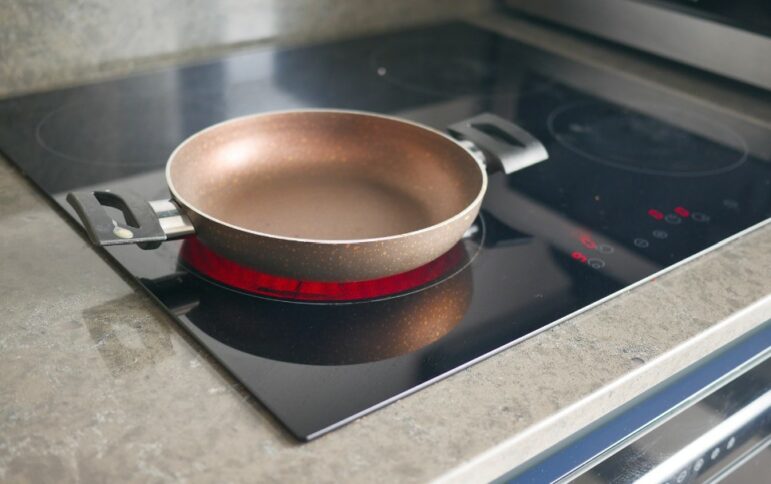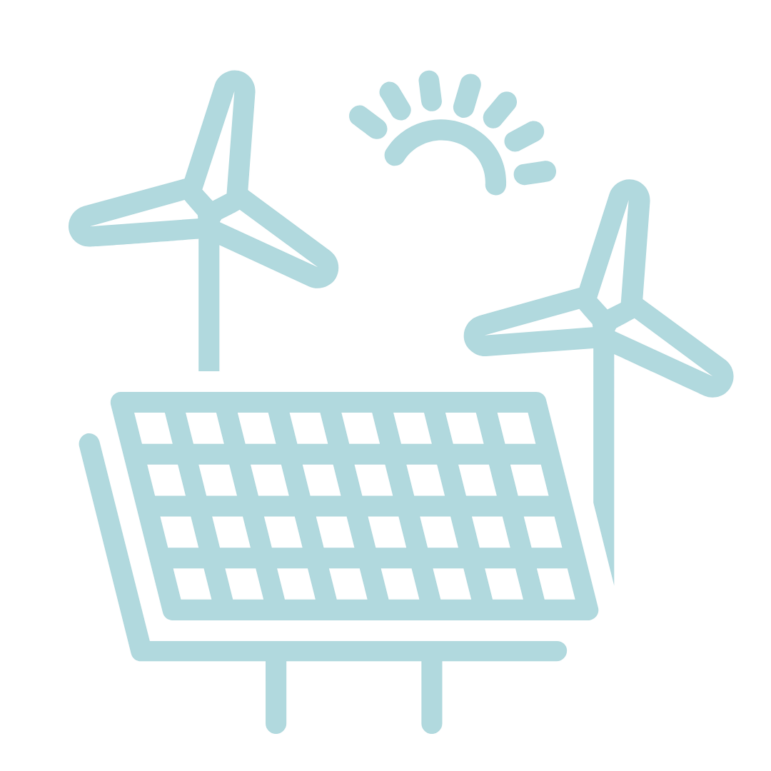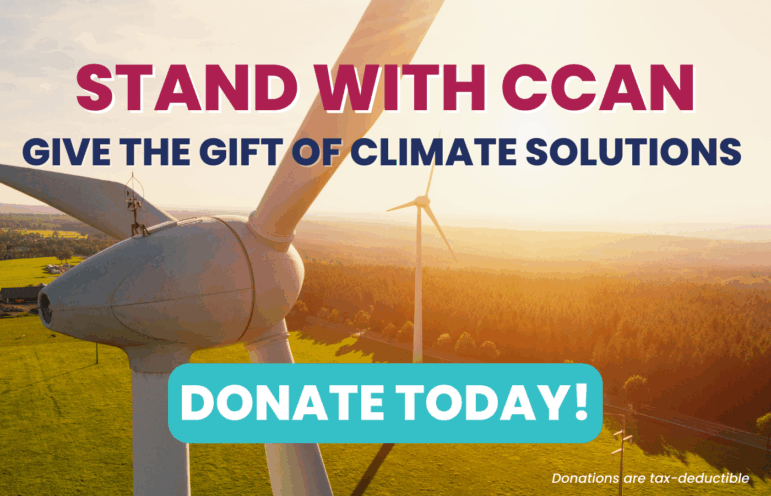How to Electrify Your DC Home!
Join the Electrification Movement
Want to move away from dangerous, fossil fuels and into a more comfortable, efficient home? You’re in the right place! On this webpage you’ll learn how to switch from burning gas to outfitting your home with clean, safe, and efficient electric appliances, like heat pumps, water heaters, cooktops, and more. In DC, these upgrades will be free for a large portion of homeowners and reduced price for many others.
What Does It Mean To Electrify Your Home?
To electrify your home, you’ll need to replace any machine that currently burns fossil fuels — which may be your gas-powered furnace, water heater, kitchen stove, or dryer—with one that runs on electricity. You might also need to upgrade your electrical panel and wiring and upgrade insulation and air sealing to make your home’s temperature and humidity consistent throughout. And you might want to install renewable energy generators like solar panels and a home storage battery system to keep everything running clean.
As more and more people electrify, those of us who don’t will be stuck footing the bill for an outdated gas system. Don’t be left behind! We’ll walk through the different aspects of electrification, as well as how to do it, but first, let’s go over what money is available to help you make it happen.
Electrification Assistance for Every Income
Whatever their income, DC residents can access many different programs to help with utility bills and pay for home electrification. The most important thing you can do right now is sign up with Chesapeake Climate Action Network to hear about new programs as soon as they become available. Then, click here to read more about the assistance available for low-income customers and initiatives that are not income dependent.
Space Heating and Cooling
More than half of your home energy use is for heating/cooling! “Heat pumps” operate as both heaters and air conditioners and often save on utility bills because they are 2-4 times more efficient than gas furnaces. They are also better for your health because they do not burn gas inside your home.
What kind of heat pump do you need?
Does your home have a furnace or air conditioners connected to air ducts to move the heated air around the house? If yes – consider a ducted system. If no – consider “mini-split” units. If you want to electrify and decarbonize your home but you are renting or cannot afford to install a permanent heat pump, consider a window unit which provides heat and cooling, either using heat pump technology or less-efficient resistance heat.

Tax credits and rebates available: Federal tax credits and DC Sustainable Energy Utility rebates are available; more are coming in 2024. In DC, federal rebates will be used to provide free upgrades. Sign up here.
Keep in mind: You’ll need 240V plugs for most models, which may require an electrical upgrade.
Water Heating
Twenty percent or more of your household energy use is for making hot water! The most efficient water heaters use heat pump technology. Resistance electric water heaters are less efficient, but are more appropriate for some homes depending on space and budget constraints. For example, heat pump water heaters cannot function in tightly enclosed spaces.
What kind of water heater do you need?
Electric resistance water heaters come in more sizes than heat pump water heaters and cost less. However, heat pump models use one-third as much energy, often saving money in the long term.

You’ll need to figure out what size water heater you need before installing a new one. Hot water heaters are rated by how much hot water they can put out in an hour (peak hour demand). To estimate your peak demand, consider what time of day your household uses the most hot water. Then use this worksheet to estimate how much hot water your household uses per hour at that time. Note: This is peak hour demand, not total daily hot water usage. You can reduce hot water needs by using low-flow shower heads and washing clothes and dishes with cold water when possible.

Tax credits and rebates available: Federal tax credits; In DC, federal rebates will be used to provide free upgrades. Sign up here.
Keep in mind: Most electric water heaters require 240V plugs, but 120V models are becoming available.
Induction Range
- Doesn’t burn gas inside your home
- Cooks with elecromagnatic force
- As powerful as gas
- Less stovetop heat to burn you
- Digital precision
- Easy to clean
Flat-Top Electric Range
- Doesn’t burn gas inside your home
- Cooks with elecromagnatic force
- As powerful as gas
- Less stovetop heat to burn you
- Digital precision
- Easy to clean
Electric Cooking
Studies show that children living in homes with gas stoves have a 42% increased chance of having asthma. Burning gas can also make respiratory illnesses in older people (like asthma and COPD) worse.
What kind of cooktop do you need?
You can replace a gas stove with a traditional resistance-heat electric cooktop or range, or a modern induction cooktop. Induction cooktops use powerful magnets under a heavy-duty glass top to make the pan hot enough to cook food. The glass itself doesn’t get very hot. They are cleaner and safer than traditional electric cooktops.

Tax credits and rebates available: Coming for income-qualified households in 2024, In DC, federal rebates will be used to provide free upgrades. Sign up here.
Keep in mind: Full-sized electric ranges and cooktops require special 240V plugs, but one and two burner electric or electric induction hotplates do not.

Drying Clothes
The most efficient dryers use heat pump technology. Like heat pumps for space and water heating, heat pump clothes dryers are more efficient than their traditional counterparts, which translates to utility bill savings. And like heat pumps, heat pump clothes dryers will become even better for the environment as the grid becomes cleaner and manufacturers switch to new refrigerants.
Keep in mind: Most electric dryers are 240V but compact 120V dryers are available.
Tax credits and rebates available: DC Sustainable Energy Utility. Federal tax credits available. In DC, federal rebates will be used to provide free upgrades. Sign up here.
Electrical Service Upgrades
To fully electrify your home, you will need 150-200 amp electrical service and panel. Homes may need an electrical panel upgrade to increase the amount of electricity your home can use at one time. Contractors often refer to these upgrades as a “heavy up”. Do you have a fuse box, issues with lights dimming when you use appliances, or sparks coming from your wires? A heavy up may be the answer to those as well.
You are also likely to need a dedicated 240V circuit and outlet if you plan to install any of these:
- an electric induction cooktop or range
- a heat pump
- an electric dryer
- an electric vehicle charger
If you have an electrician at your home, talk them about whether you will need any new 240v circuits installed.
Tax credits and rebates available: Federal tax credits available now. In DC, federal rebates will be used to provide free upgrades. Sign up here.
Go Solar
If you are income-eligible, sign up with the DC Sustainability Utility to get Solar for All free solar panel installation, which can lower or sometimes even eliminate your monthly electric bill.
If you don’t want solar panels installed, income-eligible homeowners can subscribe to a community solar plan, which doesn’t require you to install anything and can cut your electric bill by 50%. You can do this even if you live in an apartment or multi-family building.
Current income eligibility (as of June 2023):
How Will You Electrify?
Electric appliances can provide you a cleaner, greener, more effective home.
If you need help learning how to electrify, reach out to Naomi Cohen-Shields at naomi@chesapeakeclimate.org.



